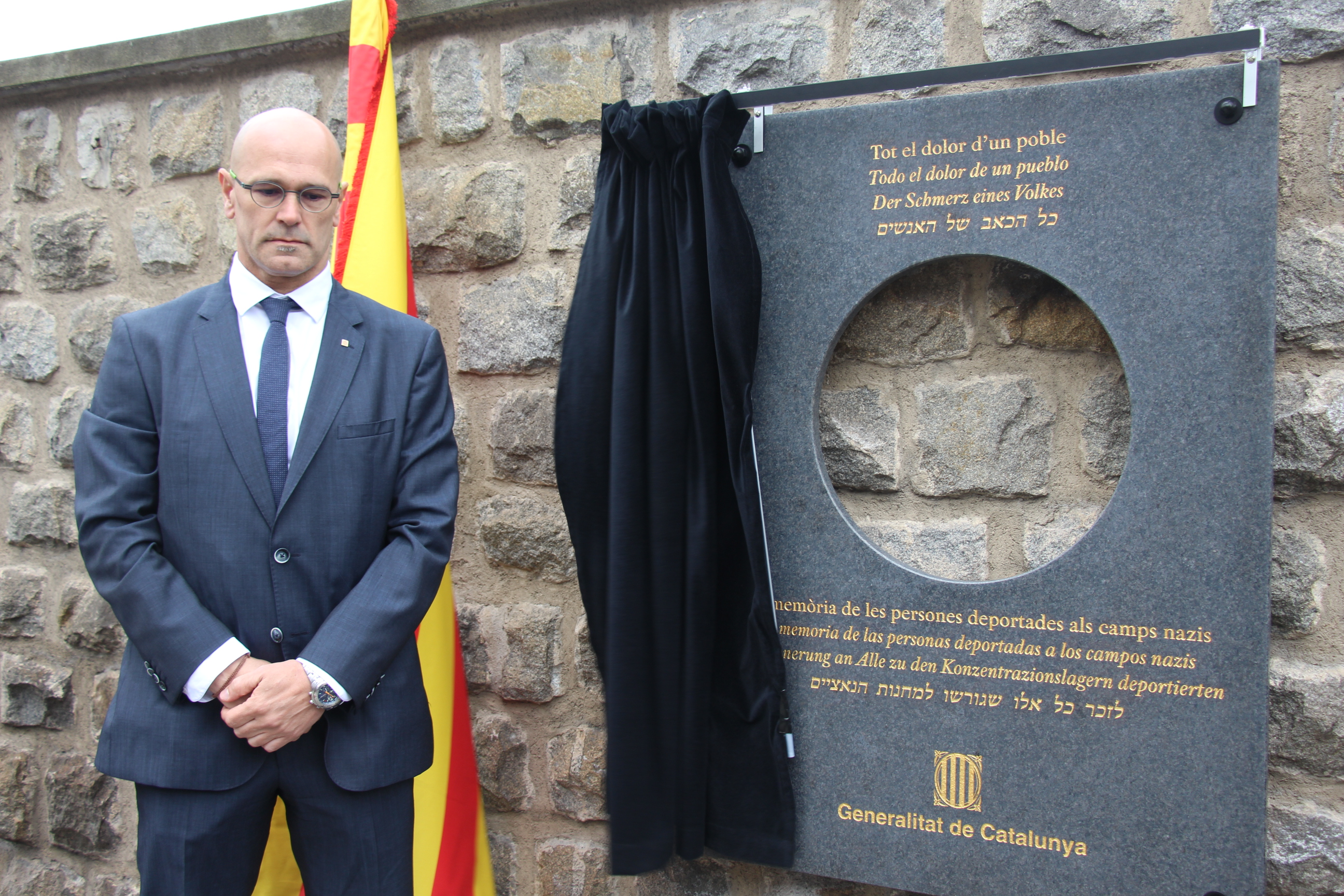Catalan Government commemorates all victims of Nazism with a plaque at Mauthausen camp
Catalan Minister for Foreign Affairs, Raül Romeva, joined the international gathering this weekend to commemorate the 72nd anniversary of the liberation of the Mauthausen-Gusen concentration camp, the biggest example of Nazi brutality in Austria. On Sunday, Romeva unveiled a plaque at Mauthausen Concetration Camp to “pay homage to the memory of all the victims of the Nazi concentration camps and to those who survived them”. Around 2,000 Catalans died at the Mauthausen-Gusen camp between [falten les dates aquí]. “We ourselves lived through our own Civil War just before World War II and we are very familiar with the ugly face of fascism and the ravages of violence,” added Romeva. Other associations such as Amical Mauthausen and the Catalan Association of Friends of Israel also participated in paying their respects.

Mauthausen (ACN).- Catalan Minister for Foreign Affairs, Raül Romeva, joined the international gathering this weekend to commemorate the 72nd anniversary of the liberation of the Mauthausen-Gusen concentration camp, the biggest example of Nazi brutality in Austria. On Sunday, Romeva unveiled a plaque at Mauthausen Concentration Camp to pay homage to the memory of all the victims of the Nazi concentration camps and to those who survived them. Around 2,000 Catalans died at Mauthausen-Gusen camps between [anys]. “We ourselves lived through our own Civil War just before World War II and we are very familiar with the ugly face of fascism and the ravages of violence,” added Romeva. Other associations such as Amical Mauthausen and the Catalan Association of Friends of Israel also participated.
The commemorative plaque, written in Catalan, Spanish, German, and Hebrew is made of granite “to recall the work of the concentration camp prisoners in the stone quarries” and also to emphasize the “long lasting nature” of the homage, explained Romeva. Designed by Catalan sculptor Jesus Galdón, the plaque has a circular hole in the middle to reveal a glimpse of the stone wall on which it is hung and which is a witness of the horror that took place there.
Romeva had a special thought for Josep Miret, Minister of the Catalan Government who entered Mauthausen camp in 1942, where he was killed. “He has not been forgotten,” Romeva said“We need to recognize the humanity of the victims of the camps at the same time as we should see ourselves reflected in those who today suffer persecution around the world,” said Romeva and emphasized that “history is not about nostalgia; history is a lesson for the future”.
“What took place here in this and in other camps was not the outcome of any war: the Holocaust was a planned genocide against the Jewish and Romani peoples,” said Romeva and noted how “terrifying” it is to remember that “two out of every three European Jews were exterminated in this genocide of six million people”. He urged the generations who “didn’t witness that horror” to take good note of the survivors’ lessons and praised their task as “transmitters” of this episode. Romeva called on them to “react immediately when the slightest hint of such ideologies reappear” and warned that only with a shared and well-known historical memory could the ghosts of the past be prevented from reappearing.
In this sense, he urged individuals and institutions to “not to hesitate to defend human rights, peace, and a future that leaves behind fear and hatred”. A future Catalonia “is willing to help build a better Europe which has learned its lessons from history,” he added.
International tribute at Gusen
On Saturday, Romeva also attended the commemoration events organized by the Gusen Memorial Committee (GMC). He joined the Austrian President, Alexander van der Bellen, and representatives of the local government, as well as government delegations from more than 21 countries and associations of victims from across Europe.
The Catalan Minister for Foreign Affairs also praised the role of photographers Francesc Boix and Antonio Garcia and writers Jorge Semprun and Joaquim Amat-Piniella, “who helped build this historic heritage” and which facilitated the Nuremberg judgment, among others. “Their witness must prevent the mistakes from the past from happening again,” he said.
Survivors of Mauthausen-Gusen also attended the ceremony, held at the original location of the Gusen camp, which has been turned into a museum in which only the crematorium was preserved.